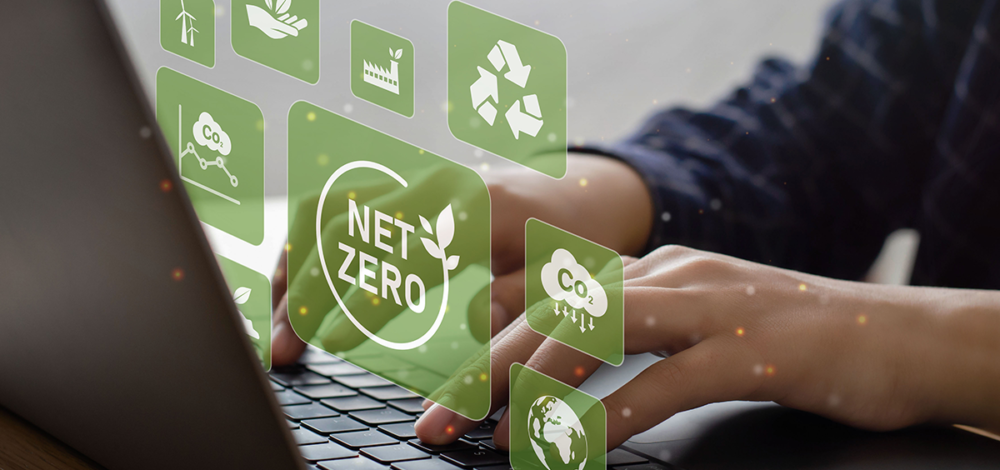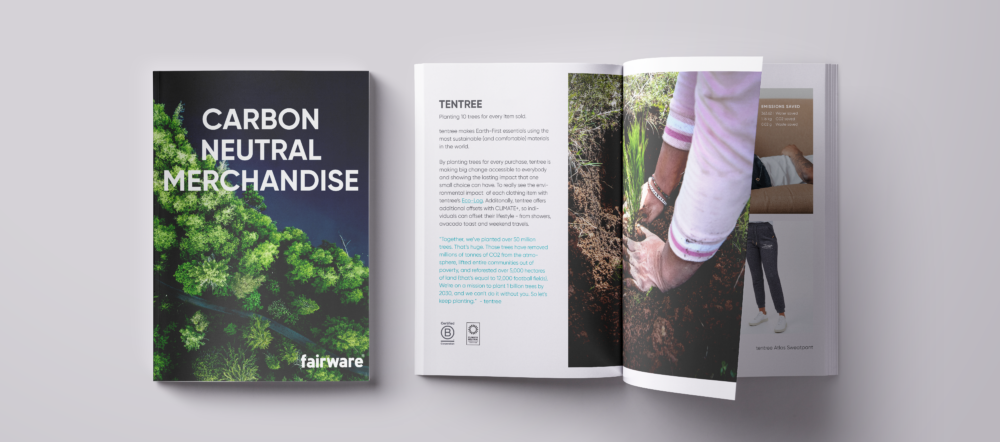How your company or products can become Carbon Neutral
How is your company contributing to a greener planet? To achieve global energy and pollution reduction targets, we need to act now. Many companies are doing their part by adopting green strategies and becoming Carbon Neutral or net-zero companies.
This is not just a goal for the world’s largest organizations. Every business has an opportunity to drastically reduce its carbon emissions and footprint and help slow global warming. In this article, we will look at what that means for your sustainably-minded company and share how you can more consciously choose branded merch to align with your sustainability and carbon-neutral goals.
Climate Change and Carbon Neutrality
Climate change is showing up all around us, and our greenhouse gas emissions are a considerable contributor to this change. Currently, we are emitting more harmful emissions than our planet can safely absorb. This is why countries are pledging to lower their emissions and why global agreements like the Paris Agreement have been enacted.
The Paris agreement aims to limit global warming to 1.5-2 degrees Celsius (compared to pre-industrial levels). The goal is to reduce greenhouse gas emissions to become a Carbon Neutral planet by 2050. To do this, countries in the agreement help each other with financial support, technology development and sharing, and capacity building to help developing countries participate in the program.
Both individuals and organizations can play a huge role in stopping climate change. According to the U.N., here are the top 10 things individuals can do now:
- Save energy at home
- Take greener transport (walk, bike, public transit)
- Eat more vegetables
- Consider travel
- Throw away less food
- Reduce, reuse, recycle, repair, or upcycle
- Change your home’s source of energy
- Use an electric vehicle
- Choose eco-friendly products
- Speak up and advocate for green initiatives, progressive policy and climate-friendly legislation
While we can all make a change in behaviour, companies and governments have the biggest role to play. Organizations can do more to minimize their impact on the environment. One way is to purchase their supplies and branded merchandise from eco-conscious companies and prioritize sustainable products. It can go a long way to reducing your organization’s greenhouse gas emissions and becoming a carbon-neutral or net-zero company.
What is Carbon Neutral?
Carbon neutrality is not about eliminating all our greenhouse gas emissions. It’s about emitting only as many CO2 emissions as our planet can safely absorb in the atmosphere. In essence, we’re not contributing to excess carbon dioxide in our atmosphere (which contributes to global warming).
What is Net Zero?
Another term you’ve likely heard is called Net-Zero. There is often confusion between this and Carbon Neutrality. Carbon neutral only refers to carbon dioxide emissions, whereas Net Zero is more inclusive and includes all greenhouse gas emissions.
Both are about minimizing the impact on our environment to no more than the planet can naturally manage. By reducing our emissions and carbon footprint, we can take giant steps forward to slowing or stopping global warming.
Looking for a great overview of all the terms? We love Plan A Academy’s overview of the differences between difference between carbon-neutral, net-zero and climate-positive terms.

Why are companies going Carbon Neutral?
According to PWC, only 8% of the world’s largest companies have pledged net-zero climate goals. The Edelman Trust Barometer (2021) found that 66% of respondents think CEOs should take the lead in creating environmental change and not rely on governments to impose (or not impose) environmental change regulations and laws.
The businesses that do have environmental and carbon-neutral policies have them because either their customers demand them or their company cares about the impact their operations have on the environment.
From PR and sales perspectives, being a certified Carbon Neutral business can attract eco-savvy investors and new customers. In fact, 76% of consumers say they’ll stop buying from a company without good social and environmental policies.
How are products certified Carbon Neutral?
There are many ways to get certified as a carbon-neutral brand. The goal should be to cut emissions as much as possible before purchasing carbon offsets to achieve neutrality so that you’re implementing real, on-the-ground change in your business processes before you move to buy offsets. It’s a big-time investment to offset your footprint. For example, with ClimateNeutral.org, the process takes one to three months. Using their Brand Emissions Estimator, you input your manufacturing, shipping, and delivery process and budget values to calculate your approximate carbon emissions last year.
Then you purchase carbon credits to offset your emissions estimate from last year. One carbon credit allows the company to emit one ton of greenhouse gas emissions. Over the years, they will be allotted fewer and fewer credits. Any unused credits can be sold to other companies.

How to adopt Carbon Neutrality in your workplace
The easiest way to get started on your organization’s journey to Carbon Neutrality is, to begin with, some fundamental, operational changes, including:
- Sharing your eco-friendly and Carbon Neutral goals with staff and clients
- Implementing a recycling and composting program at the office
- Turning off office equipment and machinery when not in use
- Put lights on timers or motion sensors, so they are only on when needed
- Optimize lighting, heating and AC systems to use less energy
- Encourage staff to carpool or find eco-friendly commuting options
- Have a flexible remote-working strategy so your team can work from home
Then, look at how you can optimize your business operations, production, office supply, and promotional product purchases to further reduce your carbon footprint.

Eco-friendly merch to support your Carbon Neutral strategy
Your strategy for purchasing, using, and upcycling your branded merch is also a great way to support your Carbon Neutral goals. It starts by partnering and purchasing from merch companies with a commitment to sustainability and that share your, commitment to carbon-neutral business practices.
Sustainability in materials and business practices
Look into the environmental policy of your promotional merch suppliers. For example, if you’re looking for branded hats for your staff to wear, here are some tips for choosing the eco-friendly hat custom hat supplier. Look for sustainability in their materials and their order fulfillment, shipping and overall business practices.
FSC-Certified merch
Look for companies with certified FSC merchandise. The Forest Stewardship Council (FSC) is a non-profit organization that certifies wood products as adhering to sustainable forest management practices. As deforestation lowers our earth’s ability to absorb harmful greenhouse gasses naturally, we need to protect the forests to help us meet Carbon Neutrality and Net Zero goals.
Assessing supply chains
Some people forget that in addition to the merch company’s materials and manufacturing, the supply chain is also a critical component for environmental policy and change. Furthermore, shipping goods is a significant contributor to greenhouse gasses. We’ve prepared a beginner’s guide to assessing your supply chains (and those of any manufacturers you work with) if you want more information to evaluate the supply chain of your vendors or your own company.
Upcycle old merch
When your old merch is outdated or no longer useful, look for ways to upcycle before you toss them in the landfill or recycle them. Fabric-based merch like clothing can be upcycled into bags, totes, or small zippered or drawstring bags. Vinyl signage can be upcycled into pouches or bags too.
Certified Carbon Neutral Products
Consider sourcing promotional products that are certified carbon neutral. You can add certified carbon neutral journals, water bottles and apparel, just to name a few, to your merchandise collection to support your sustainability goals. There are more and more certified carbon neutral promotional products becoming available.

More climate-friendly Initiatives
For more information about how you can adopt Carbon Neutrality in your workplace, here are a few resources to get you started:
- Science-Based Targets: Promotes best practices in science-based environmental initiative target setting.
- CDP: A not-for-profit charity that created a system to create unparalleled engagement on environmental issues globally.
- Enviro-Stewards: They help you improve your facility’s energy, water, and product yields to shrink your environmental footprint and increase your margins.
And, talk to us about the best companies to purchase your custom branded promotional items from so you can support other businesses on the same carbon-neutrality path as you.
